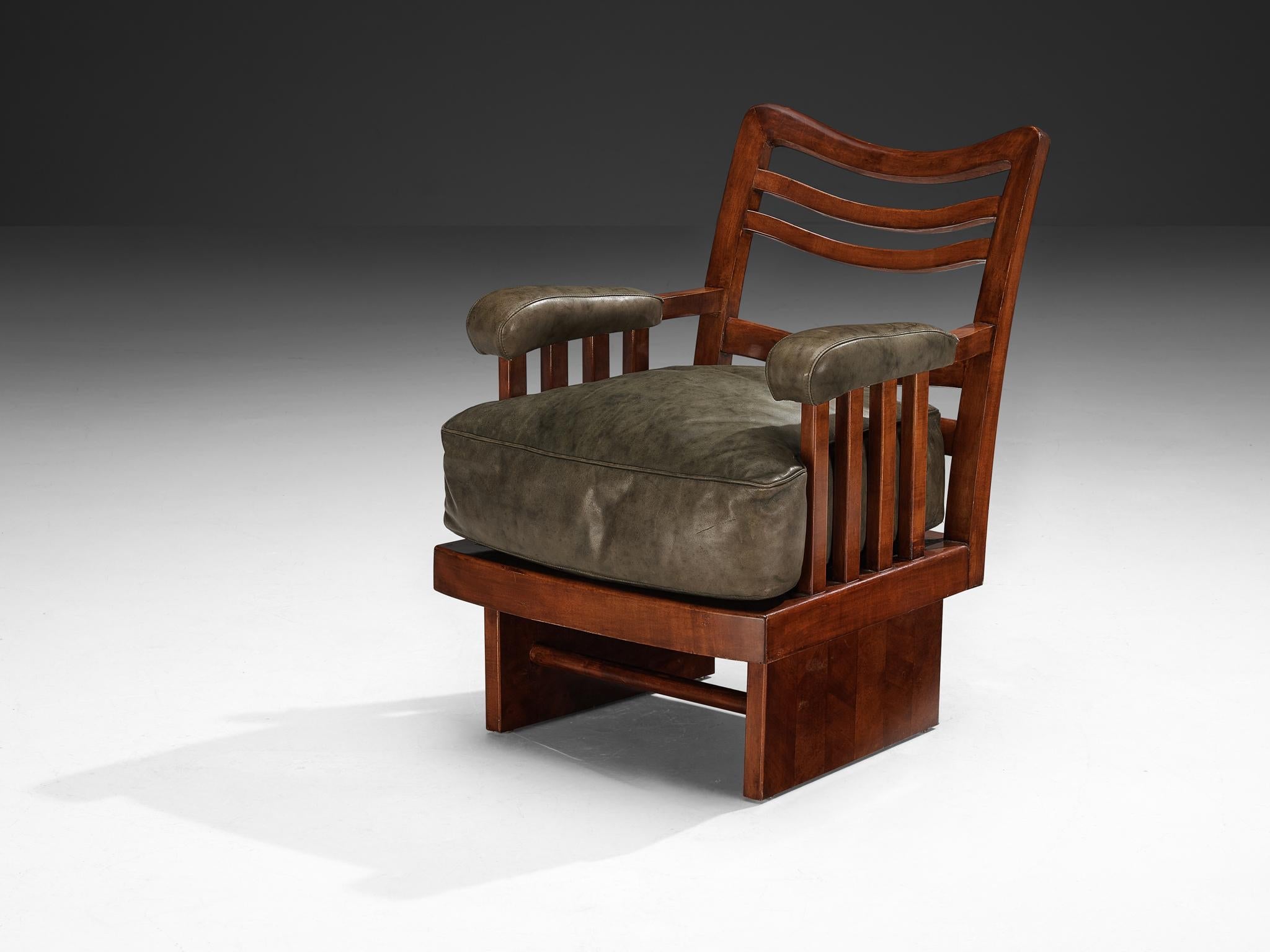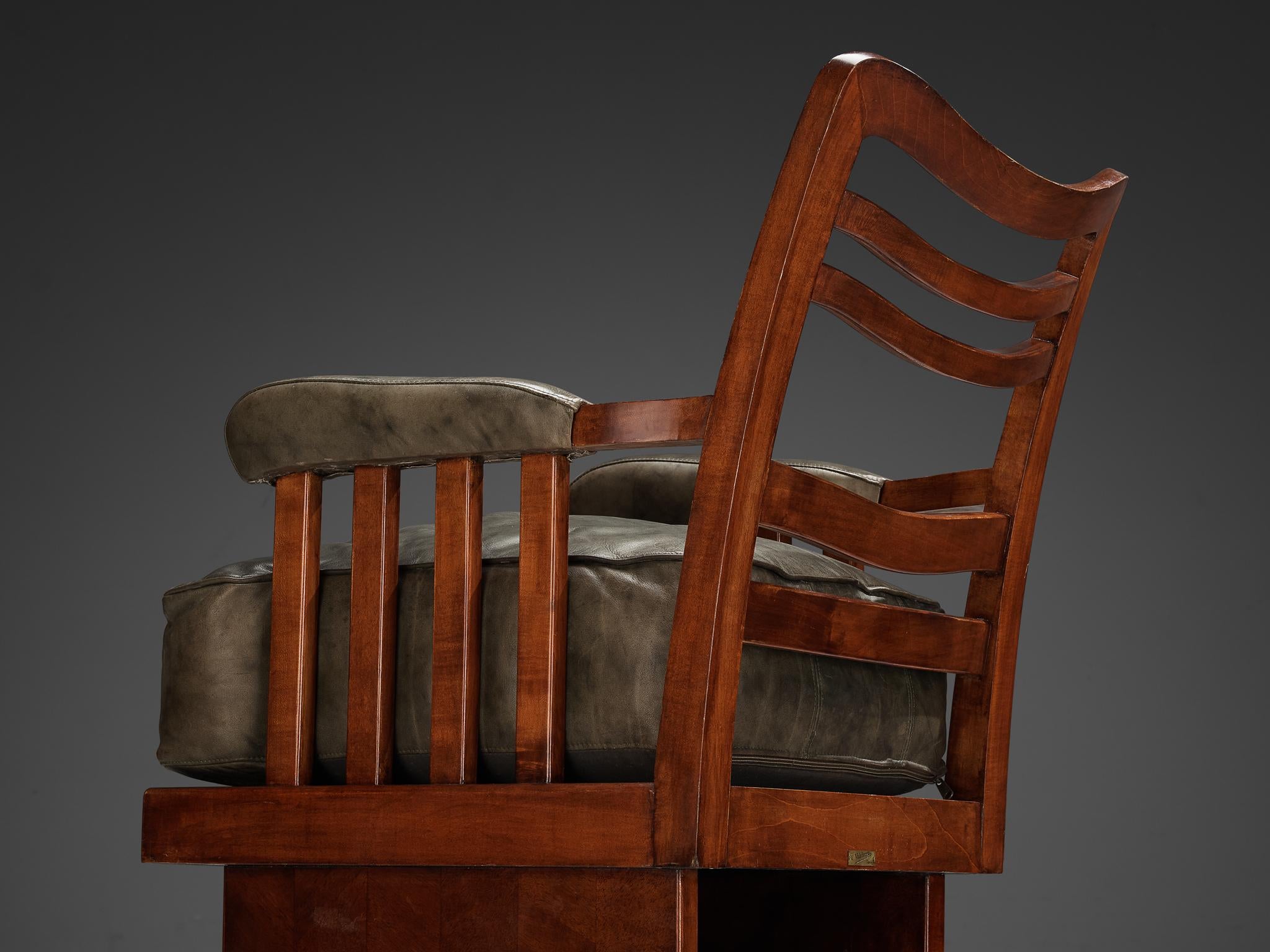











Ernesto Valabrega Pair of Lounge Chairs in Olive Green Leather and Mahogany
Ernesto Valabrega for Vittorio Valabrega, pair of armchairs, mahogany, cherry, leather, Turin, Italy, 1930s
These chairs, designed by Ernesto Valabrega in the thirties, depart from a strict geometric design infused with organic details. The backrest of the chair features a striking composition of curved elements. Its uppermost section gently arches outward, creating a subtle wave contour that adds a sense of movement to the otherwise linear design. Below this, three parallel horizontal slats, each with a flowing curvature, mimic the top edge’s undulating form, contributing to a certain symmetry and rhythm. The armrests are straight and clean in design, with elegantly spaced openings formed by vertical slats, adding a sense of lightness and airiness to the chair’s solid structure. The armrests and seat cushion are generously padded and upholstered in olive green leather, offering exceptional comfort. Two horizontal frameworks constitute its base, which impart the piece with a solidified and commanding look.
Italian designer Ernesto Valabrega (1901-1944) was born in Turin, as the son of celebrated designer and cabinetmaker Vittorio Valabrega (1861-1952).
His father Vittorio was, together with his brother, the founder of Fratelli Valabrega (Valabrega Brothers Company, since 1884) that was situated in Turin. During the 1890s, Vittorio became the sole owner of the company and had great success with his refined wooden furniture. Vittorio Valabrega became well-known for his furniture in the floral Art Nouveau style, but as a true child of the 19th century, his company also manufactured furniture in Neo-Renaissance and the French Rococo Louis XV-style. His designs received positive attention and were awarded at World Exhibitions. At the famous exhibition in Paris in 1900, Vittorio even received a gold medal.
It was at the age of 24 that Ernesto got on board with his father’s business. His involvement from 1925 onwards had a great impact on the company. Ernesto decided to change the company’s name to Mobilart in 1928 and radically redirected the course. Whereas Vittorio was inspired by a variety of contemporary and historic styles, Ernesto chose for a different approach. He renounced the 19th century mixture of styles and approached furniture design in the same manner as the highly influential William Morris of the English Arts and Crafts movement. Their reform was an artistic reaction to the widespread industrialization of the 19th century.
Ernesto despised products of poor quality and chose high quality materials that would last a lifetime. The furniture he created in the late 1920s and 1930s are a true testament to his beliefs. With his irregular carvings of oakwood, the hammered hinges, flowing edges, embossed surfaces his furniture shows quality, attention to detail and ultimate craftsmanship.
VAT within the EU: When buying or delivering an item within the EU, VAT usually applies and will be added.
Choose options












VAT within the EU: When buying or delivering an item within the EU, VAT usually applies and will be added.
Product Details